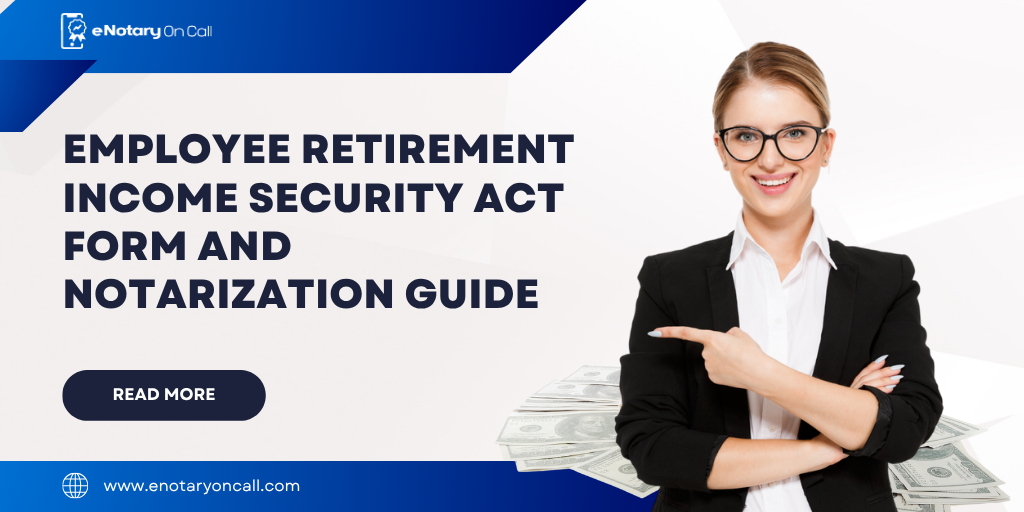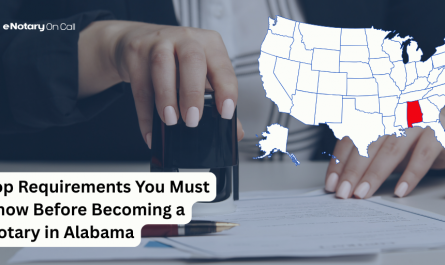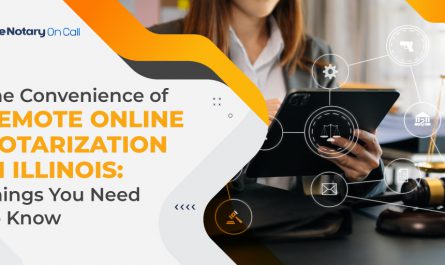The working-class people understand the importance of having a retirement plan and funds. Therefore, they take steps to secure them. This involves several crucial steps, in addition to notarization, for some essential documents required during the withdrawal process. It is important to understand that remote online notarization in Florida ensures authenticity if you transfer money into an IRA, request a lump sum distribution, or even transfer from a previous employer plan. It allows for the verification of a person’s identity and ensures the correct intention for accurate documentation.
This blog will further explain the Employee Retirement Income Security Act, documents or withdrawal forms, notarization, and a platform that can help you notarize easily.
To begin with, a quick note on ERISA helps employees secure their retirement and benefit plans through the law.
In brief,
ERISA, an abbreviation for the Employee Retirement Income Security Act, ensures employers provide for their employees honestly. This happens due to certain factors. First, the minimum standards for companies are decided to make them aware of how these plans will work. They should know about employee eligibility, fund management, and reporting.
Second, employers must abide by their fiduciary responsibility.
Third is accurate reporting and transparency in disclosure. Fourth is providing employees with their rights, which empowers them to take legal action if the company or employer does wrong. And lastly, the PBGC is an agency that ensures employees get their rightful amount even if any pension plan goes bankrupt.
The above is a brief overview of ERISA. Let’s move on to the most searched retirement plans or pension queries.
What are Retirement or Pension Withdrawal Forms?
The form is an official document for requesting fund disbursement or transfer from the retirement plan. Other accounts, such as 401(k) and similar financial accounts, are also available. The following names are mentioned to help you with information about additional retirement accounts.
- 401(k)
- 403(b)
- IRA
- Pensions or TSP, FERS, or CalPERS. These are government accounts, though.
Hence, the withdrawal form contains information about the account holder and the action a person will take. It also includes information about the payment method or the spouse’s consent.
Notarization comes into the picture to safeguard everything and more clearly focuses on fraud prevention and financial implications.
Now, the next important factor related to the forms is their notarization. Why is it important?
Importance of Notarization for Pension and Retirement Forms
Firstly, it allows identity verification. The notary public confirms the identity of a person who claims the form.
Next, it prevents fraud by eliminating unauthorized withdrawals.
Further, notarization adds legal action rights in case any dispute is related to the forms.
Lastly, many government-related or financial institutions mandate the notarization process for critical forms, thus notarization becomes a necessity.
The importance of form notarization has been explained above. Now comes the question of what forms must be notarized.
Pension Forms that Require Notarization
A few forms often need notarization; those are mentioned below.
- Withdrawal forms
- Pension distribution request
- Spousal consent form
- Change in beneficiary name form
- Loan withdrawal form
- Rollover form
- Cash-out request form
Knowing which forms require notarization is important, but verifying the essentials with employers’ HR departments and pension plan administrators is equally necessary. They will help you fill them out accurately, avoiding any future legal issues.
Spousal Consent and Notarization
The employee choosing an ERISA or retirement plan knows that there is a factor known as spousal consent. It allows withdrawals and also makes changes to the beneficiary easy. Thus, to protect the spouse from losing the benefit of retirement income, it is essential to get consent notarization by opting for either an online platform or the traditional approach.
Preparation for Notarization of Important ERISA or Retirement Forms
It is always smart to be prepared with essentials before starting the notarization process.
Form completion is a basic requirement for notarizing forms and documents. Before presenting the document to the notary public, check all the details.
- ID Verification: Be prepared with a passport, license, or government-approved ID.
- Presence of Spouse: It is sometimes required that the spouse be present during notarization, or their IDs are needed. Thus, inquire about it from a notary public or pension plan administrator, as they will guide you properly.
Lastly, before contacting a notary public in Florida, it is necessary to inform them about the purpose of notarization.
What to Expect During Document Notarization?
Visiting a notary public or choosing an online notarization platform for notarizing a pension or retirement document requires following a few steps mentioned below.
- Review: The notary will ask to produce some documents to quickly complete the verification process.
- ID Check: Another critical part is showing valid ID proof for identity verification.
- Witness the Signature: This will get the signature in the form you shared with the notary official.
- Recording Notary Details: This is also known as the notary journal. It records the type of document, time of notarization, and ID details.
- Seal and Signature: This is the last part where the notary official puts the seal and signature while completing the document notarization.
The complete procedure will take about 15 to 20 minutes.
Mistakes to Avoid During Notarization!
Sometimes, people can make minor mistakes unknowingly. Thus, to avoid this, here is a guide and important things to know before going for notarization.
- Never put any signature on any document before meeting the notary public.
- Avoid submitting IDs that are expired or not acceptable.
- Keep photocopies along with original IDs.
- Bring your spouse with you if they are involved in the process.
- Choose a trusted remote online notary and also keep the institutional instructions in mind related to notarization.
Keep the points mentioned above in mind. They will help in saving time and effort.
Why Choose a Trusted Online Notarization Platform for the Employee Retirement Income Security Act Documents?
Here are a few important factors to consider when choosing an online notary platform for document notarization.
- No appointment required, it offers flexibility to do notarization on the same day.
- Single-click upload of multiple documents.
- Trusted and certified notaries to perform notarization.
- No need to visit multiple locations to find one.
- Experienced notary officials to get the notarization process done in a few minutes.
- Flexibility of time and place for online document notarization.
- No restrictions related to language, as many online notary platforms onboard notaries who know multiple dialects.
Conclusion
Although notarizing withdrawal forms may seem small, it plays a vital role in protecting your financial future. Properly notarized documents ensure your retirement funds are secure, legitimate, and processed without errors. Taking time to complete this step reduces the risk of fraud and guarantees compliance with ERISA guidelines.
Whether you are withdrawing, rolling over, or updating your retirement details, notarization helps you maintain peace of mind and legal assurance for your future.
Use eNotary On Call for fast, secure, same-day online notarization of your retirement and ERISA-related documents.

In case of a query related to the notarization process or document upload, visit the link https://www.enotaryoncall.com/contact
FAQs
What types of plans does ERISA cover?
It covers retirement and welfare benefit plans. In brief, these include health insurance, life insurance, and profit sharing in a 401k or 403b. Furthermore, HMOs, HRAs, and FSAs are also included.
What are 401(k) Plan?
It is sponsored by the employer for employees’ future savings account, providing tax benefits. There are contributions from both the party employer and the employee in the form of assets. There are also options for automatic contributions, investments. Further, the 401(k) plans are of two types, traditional and Roth. Traditional contributions are pre-tax, withdrawals are taxable, and in Roth withdrawals are tax-free, and contributions are made after-tax.
What are employee stock ownership plans (ESOPs)?
ESOP is a benefit plan for employees that gives them ownership stock. They get the company stock for a particular period of time. It benefits employees with direct profit as the company grows.
When do you begin to accumulate benefits?
Once you become a plan participant, you begin to accumulate benefits, usually after meeting eligibility requirements such as completing a set period of service or reaching a specified employment duration.



